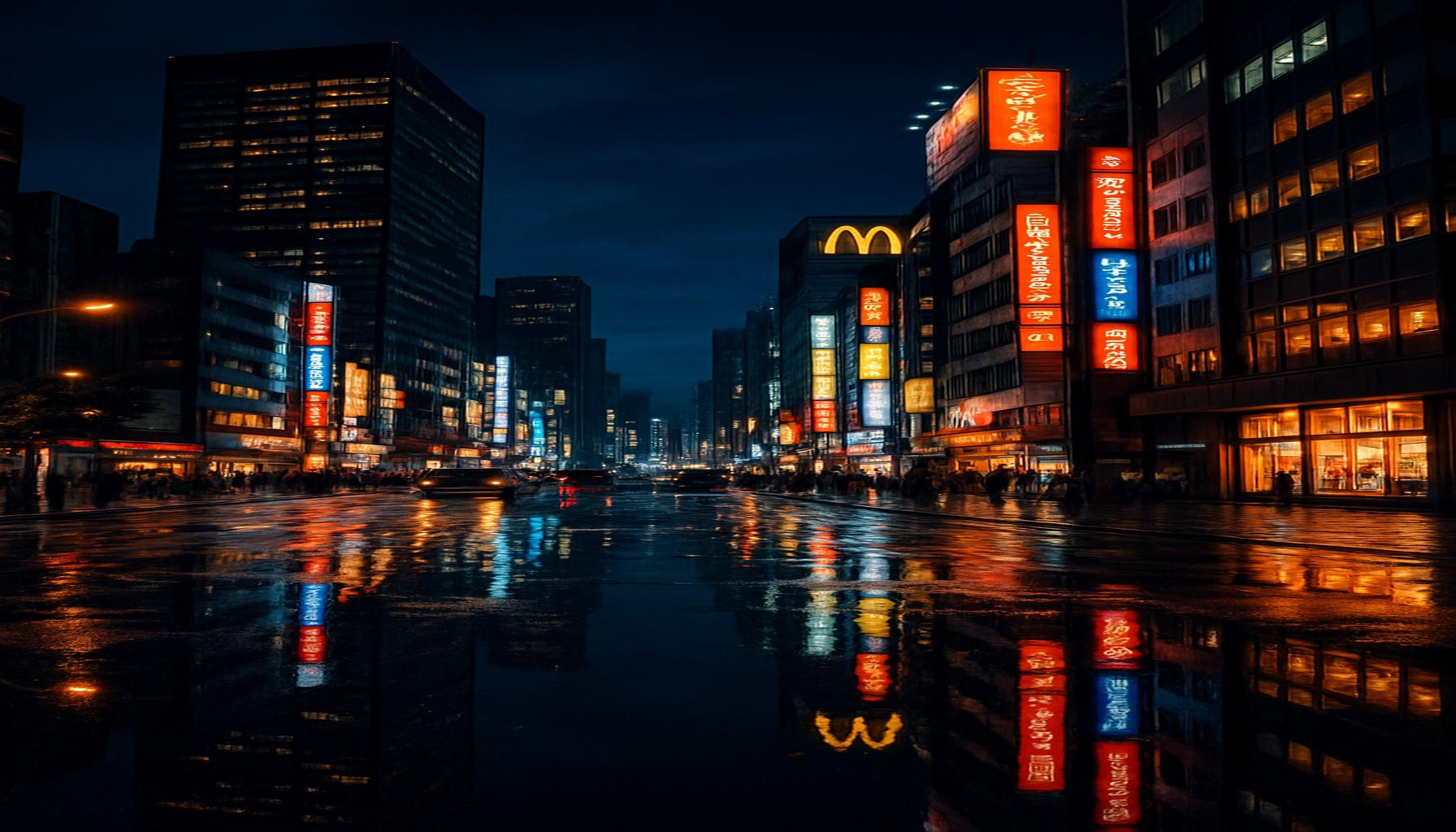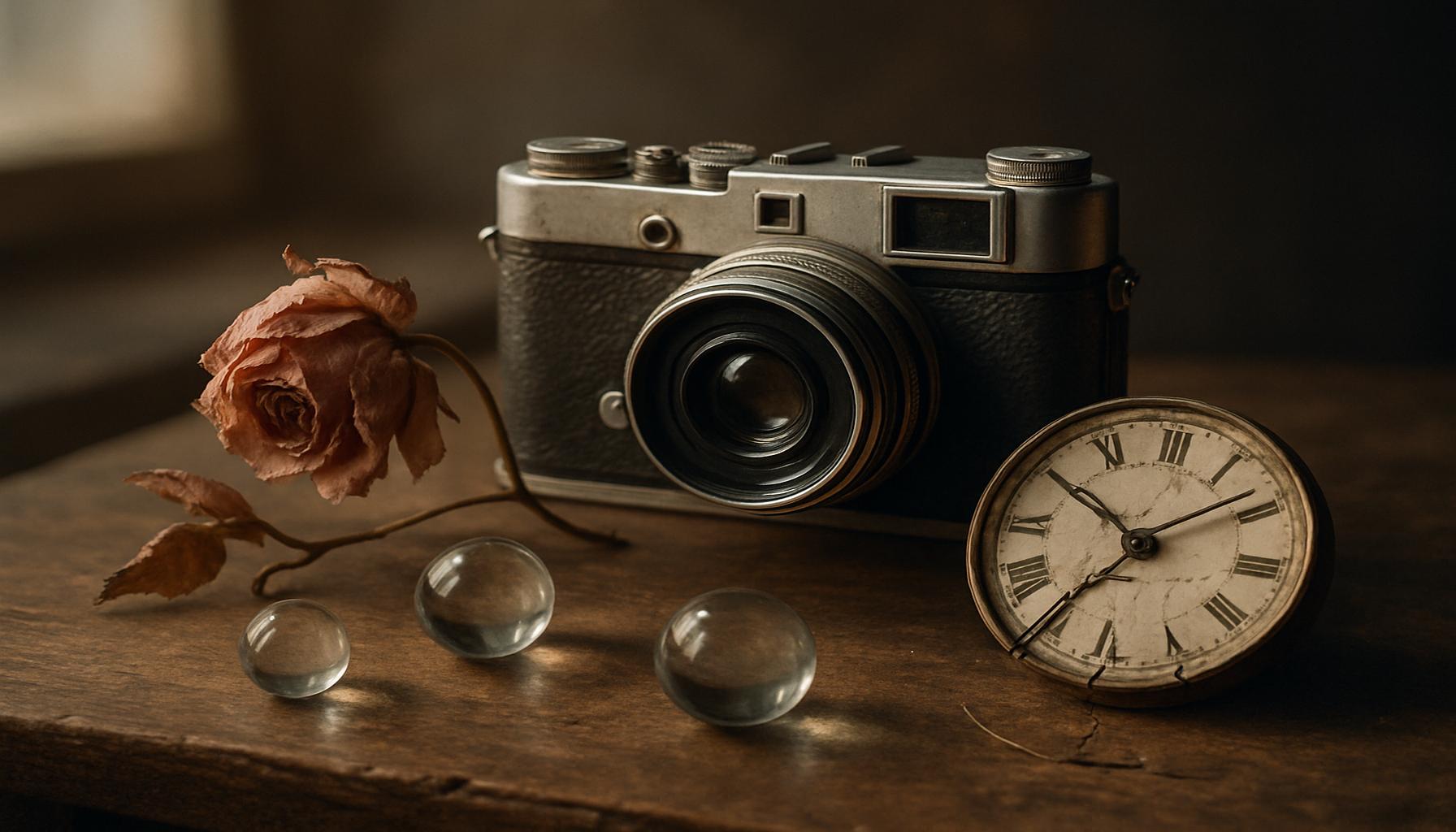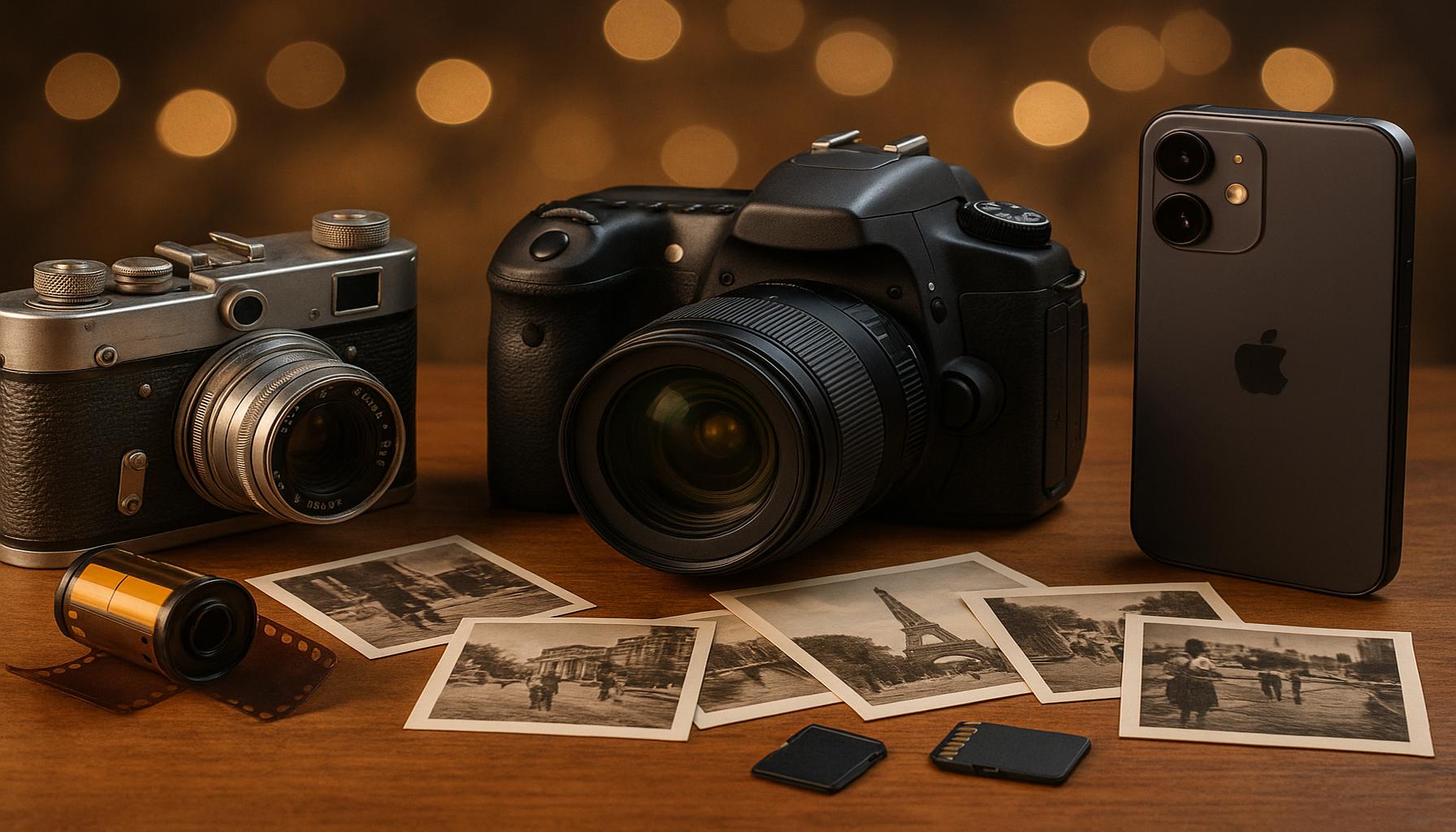Urban Landscape Photography: Capturing the Beauty of Cities at Night

The Transformative Power of Night Photography
As the sun dips below the horizon, cities come alive in a way that is both enchanting and mesmerizing. The urban environment, often bustling and overwhelming during the day, transforms into a canvas of shadows and lights, revealing a starkly different narrative. Urban landscape photography at night not only allows photographers to explore a city’s aesthetic but also its soul, showcasing the vibrant energy and intricate details that daylight often hides.
Why Shoot at Night?
Photographing cities after dusk presents distinct advantages that can elevate creative expression:
- Dynamic Lighting: The interplay of natural and artificial light creates stunning contrasts that can enhance the mood of any photograph. For instance, the soft glow of a streetlamp against the sharp edges of a historical building can evoke a sense of nostalgia, while vibrant neon signs in a bustling entertainment district bring an electric vibrancy to the scene.
- Less Crowded Spaces: Nighttime often provides solitude in urban environments, allowing photographers to capture intimate scenes that portray the city as a playground for night owls. For example, the serene charm of a quiet Chicago alley can contrast sharply with the frenetic energy of its daytime hustle, highlighting the city’s dual personalities.
- Enhanced Mood: The ambiance of dusk instills a different emotional quality to photographs. The cooler tones of blue hour can create a sense of calm, whereas the warm hues from city lights can evoke a feeling of warmth and life, inviting viewers to experience the city after dark on a deeper emotional level.
From the iconic skylines illuminated by the lights of skyscrapers in New York City to the historic charm of San Francisco’s Fisherman’s Wharf, each location tells a unique story through the lens of night photography. Capturing the captivating beauty of cities by night not only showcases their architectural wonders but also reveals the hidden life pulsing underneath the surface after dark. This approach opens doors to endless artistic possibilities, urging photographers to uncover the narratives that unfold when daylight fades.
The Journey Ahead
Join us as we delve deeper into the world of urban landscape photography at night. Discover tips, techniques, and inspiring themes that will elevate your nighttime photography to new heights. Whether you are capturing the spark of nightlife or the stillness of a midnight street corner, the journey through this enchanting art form promises to unveil the secrets of the city, one photograph at a time. This exploration is a call to action for photographers of all skill levels to embrace the magic of the night and unlock new realms of creativity.
DIVE DEEPER: Click here to discover the art of urban street photography
Essential Equipment for Night Photography
Embarking on an adventure in urban landscape photography at night requires not just an eye for artistry but also the right equipment to effectively capture the beauty of cities after dark. Understanding the tools of the trade can greatly enhance your ability to create enchanting nighttime images that resonate with viewers. Whether you are a beginner or a seasoned photographer, equipping yourself with the right gear is paramount.
Camera Options
While many photographers may rely on their smartphones for casual shots, DSLR and mirrorless cameras offer significant advantages in low-light conditions. These cameras provide larger sensors that capture more light, resulting in sharper, less noisy images. Additionally, they allow for interchangeable lenses and manual settings, empowering photographers to tailor their gear to specific conditions and scenes.
Key Accessories
- Tripod: The cornerstone of night photography, a sturdy tripod is essential for achieving stability during long exposures. Using a tripod allows you to capture crisp details in low-light settings and prevents the dreaded blur that often accompanies handheld shots.
- Lens: Fast lenses with larger apertures (such as f/2.8 or wider) are beneficial for capturing sharp images in low-light environments. Wide-angle lenses can further enhance urban landscape shots by allowing more of the scene to fit into the frame, making them ideal for dramatic cityscapes.
- Remote Shutter Release: This accessory minimizes camera shake during long exposures, ensuring that your images remain clear and defined. A remote shutter release allows you to take the shot without physically touching the camera, which is particularly useful in low-light settings.
- Filters: Neutral density filters enable photographers to control exposure and create dreamy effects even during the night. By reducing the amount of light entering the lens, these filters can achieve long exposure times that give movement to clouds or water while maintaining the crispness of city lights.
Techniques for Captivating Night Shots
Mastering the art of urban night photography requires an understanding of various techniques that cater specifically to the challenges presented by low light. Among these, long exposure techniques are crucial for creating striking images. By allowing the camera’s sensor to gather light over a longer period, photographers can capture dynamic scenes, such as traffic trails or the gentle movement of clouds above illuminated buildings.
Utilizing the “golden hour” just after sunset can offer slightly brighter conditions, which can help ease the transition into full nighttime photography. Additionally, experimenting with high ISO settings can boost your camera’s sensitivity to light, but care should be taken to avoid excessive noise in the resulting images. Finding the right balance will be key to producing visually appealing photographs.
The heart of a city often beats stronger after the sun goes down, presenting a unique opportunity for photographers to explore. With the right equipment and techniques, you can delve into the rich tapestry of urban life illuminated by the night, creating stunning artworks that encapsulate the essence of the city after dark.
Exploring the Intricacies of Urban Landscape Photography
Urban landscape photography at night presents a unique canvas to capture the vibrancy and essence of city life. As the sun sets and the city lights ignite, photographers are offered a mesmerizing display that brings out both the play of light and shadows in the architectural forms and urban settings. This genre of photography not only highlights the beauty of cities but also explores themes of solitude, movement, and the unseen narratives within urban locales.One significant aspect of capturing cities at night is the opportunity to utilize long-exposure techniques. This method can create surreal images that emphasize motion, such as streaking car lights on a busy highway or the gentle flow of clouds over a city skyline. The resulting images often evoke feelings of tranquility or excitement, showcasing the city’s character in a way that stark daylight photography cannot. In addition, urban night photography allows for experimentation with a range of artificial lighting, from street lamps to illuminated signs, each contributing to the mood and atmosphere of a photograph. These sources of light can dramatically enhance features, creating dynamic contrasts between the illuminated and darker areas, which adds depth and intrigue to the composition. Photographers often find that these unique lighting scenarios can highlight the architectural details and character of buildings, transforming ordinary structures into captivating subjects.Moreover, the quietness of the city at night exposes an entirely different layer of urban life. Many photographers take this opportunity to focus on uninhabited streets, empty parks, and subdued neighborhoods, conveying a narrative of stillness often absent during the bustling daytime hours. The absence of crowds allows for a deeper exploration of the urban environment, leading to personal interpretations of familiarity and isolation within a thriving metropolis.In this exploration, the themes of urban transformation come to life, as cities evolve and adapt with each passing day. Photographers documenting urban landscapes are not merely capturing images; they are framing stories of change, resilience, and the delicate balance between nature and urbanization. Nighttime imagery delves into the heart of the city, uncovering hidden gems and forgotten spaces that tell their own tales—inviting viewers to reflect on the multifaceted relationship between individuals and the city they inhabit.In conclusion, the art of urban landscape photography at night is a powerful medium that captures the ethereal beauty of cities. As photographers continue to push the boundaries of creativity and expression under the nocturnal sky, they invite us to appreciate the often-overlooked intricacies of our urban environments, urging us to explore our own places within the tapestry of city life.
| Category | Advantages |
|---|---|
| Visual Impact | The use of dynamic lighting creates striking visuals that captivate viewers. |
| Enhanced Storytelling | Night imagery conveys narratives of solitude, motion, and the unseen. |
DISCOVER MORE: Click here to learn how art can uplift your spirit
Creative Composition Techniques for Night Photography
Beyond having the right gear and understanding fundamental techniques, the composition of your urban landscape photos at night can make all the difference in delivering powerful imagery. Thoughtful arrangement of elements within a frame can enhance storytelling and draw viewers into the photographed scene. Here are some key composition strategies to keep in mind while working under the cover of darkness.
Leading Lines
A popular technique in all forms of photography, leading lines can guide the viewer’s eye toward the focal point of your image. In urban landscapes, these lines might be highways, rail tracks, or even the edges of buildings that taper into the distance. Illuminate these paths with reflections from streetlights or neon signs, creating a sense of depth and movement. They create an avenue for visual exploration, inviting viewers to discover layers within your photograph.
The Rule of Thirds
The rule of thirds remains a timeless guideline to ensure balanced and engaging compositions. By dividing your frame into nine equal sections with two horizontal and two vertical lines, you can strategically position your horizon or key subjects along these lines or at their intersections. This technique enhances visual interest and leads the eye naturally around the composition. For instance, placing the city skyline off-center against a starry sky can reveal both the urban structure and the expanse of the night above.
Incorporating Foreground Elements
To add a sense of scale and depth to your nighttime cityscapes, consider incorporating foreground elements. This could be anything from a passerby illuminated by streetlights to the reflections of city lights on a nearby body of water. Foreground subjects help provide context and anchor the viewer within the scene, creating a more immersive experience. Look for reflective surfaces like puddles or glass that can amplify the visual narrative and complement the glow of the city.
Experimenting with Light and Shadow
Navigating the balance of light and shadow is a crucial art in night photography. Streetscapes offer a dynamic interplay of light sources—streetlights, traffic signals, and neon signs—that create dramatic contrasts and mood. Experiment with varying exposure settings to capture a broad range of tones. Moreover, utilizing shadows effectively can add an element of intrigue and texture, enhancing the overall ambiance of your photograph.
Sky and Stars
When conditions permit, showcasing the night sky alongside cityscapes can add a significant layer of impact. Incorporate stars or celestial phenomena into your compositions to provide contrast against the modernity of urban life. Use longer exposures to capture star trails, or consider timing your shots during astronomical events, such as meteor showers or the Milky Way’s visibility, which are more pronounced in areas away from light pollution.
By mastering these composition techniques, urban landscape photographers can unveil compelling stories of cities at night. Each city presents a unique canvas, illuminated through the lens, showcasing the vibrant life that thrives after dark. With creative vision and a willingness to explore various angles, photographers can produce extraordinary images that capture the heart and spirit of urban landscapes at night.
DISCOVER MORE: Click here to uncover the secrets of creative writing
Conclusion
Urban landscape photography at night offers an extraordinary opportunity to explore and document the mesmerizing character of cities after dark. The unique glow of neon signs, the shimmering reflections on wet pavement, and the interplay of light and shadow create a dynamic environment that tells compelling stories. Mastering the art of night photography involves not only understanding technical aspects such as exposure and focus but also creatively employing composition techniques to enhance visual interest.
By leveraging leading lines, utilizing the rule of thirds, and incorporating thoughtful foreground elements, photographers can produce images that resonate deeply with viewers. The captivating strengths of light and shadow not only add drama and depth but also contribute to the overall atmosphere of the composition. Furthermore, the inclusion of the sky and stars in photographs can infuse a sense of wonder and perspective, highlighting the coexistence of nature and urbanity.
As cities continue to evolve, urban landscape photography will remain a vital means of capturing the transient beauty of nightscapes. Whether you are documenting a city for personal expression or professional purposes, stepping out into the nighttime urban environment will allow you to witness and convey a side of the landscape that is often overlooked. Through your lens, you can invite others to appreciate the enchanting, vibrant life that characterizes cities at night, inspiring curiosity and admiration for these spaces that never truly sleep.


